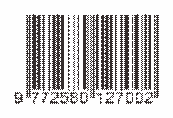THE EFFECTIVENESS OF AUTISM CHARACTER STIMULATION ROOM AT AUTISM SERVICE CENTRE BATAM THROUGH BEHAVIORAL ARCHITECTURE
Abstract
Autism or commonly referred to as autism spectrum disorder often occurs in children at an early age. Not only that, the symptoms of autism result in the failure of the brain's nervous system and sensory bodies as well as the intellectual decline in individuals who experience it. Sensory malfunctions in the body eventually form 2 characters with different responses to stimuli in a certain environment, namely, hyposensitivity and hypersensitivity. 1 in 500 children in Indonesia is known to have this disorder, so it becomes an issue that is not only developing in the country but has an effect on the world. With a significant increase in the number of autism cases, the need for space will increase. Architects as a profession involved in design play an important role in creating a conducive space for children with autism. However, the space must be adjusted based on the characteristics of autism, so that it can function well for them. This research was conducted by evaluating spaces that have different levels of stimulation in the Batam City Autism Service Center, then developing them. This study also uses a behavioral architectural approach by reviewing the characteristics of people with autism, so that the room can provide comfort for them. The research method used is a qualitative-descriptive form and analyzes the room based on existing criteria. The results of the research are a multifunctional low-stimulus room and a high-stimulus room that can adapt based on variations in activity.
Keywords
Full Text:
PDFReferences
Bahari, M. N. (2020). THERMAL COMFORT INVESTIGATION ON HOLY MOSQUE Case Study : Lautze 2 Mosque Bandung. Journal of Architectural Researh and Education, 2(1), 82–89. https://doi.org/10.17509/jare.v2i1.24105
Beatrice, A., & Susanto, L. N. F. (2021). Pengaruh Perancangan Interior Terhadap Psikologi Pada Sekolah Inklusi Taman Kanak-Kanak di Era New Normal. Seminar Nasional Psikologi UM, 1(1), 158–174.
Cahyadi, A., & Kurniawan, M. A. (n.d.). Penerapan Arsitektur Perilaku pada Perancangan Panti Rehabilitasi untuk Orang dengan HIV/AIDS di Sleman. Vitruvian: Jurnal Arsitektur, Bangunan, Dan Lingkungan, 8(3), 100–110.
Celia, J., & Santosa, A. (2014). Perancangan Interior Pusat Terapi dan Sekolah Anak Autis di Surabaya. Intra, 2(2), 283–287.
Cherry, C. P., & Underwood, L. (2012). The ideal home for the autistic child: physiological rationale for design strategies. Autism Science Digest, Aavailable Online: Https://Purposefularchitecture. Com/the-Ideal-Home.
Desiningrum, D. R. (2017). Psikologi anak berkebutuhan khusus. Yogyakarta, psikosain.
Ghazali, R., Sakip, S. R., & Samsuddin, I. (2018). The effects of sensory design on Autistic children. Asian Journal of Behavioural Studies, 3(14), 68–83.
Glennon, T. J. (2021). Sensory Integration (SI) Therapy BT - Encyclopedia of Autism Spectrum Disorders (F. R. Volkmar (ed.); pp. 4243–4250). Springer International Publishing. https://doi.org/10.1007/978-3-319-91280-6_1199
Haristianti, V., Raja, M. T. M., & Putri, C. T. (2021). ANALISIS FAKTOR KEBETAHAN PENGUNJUNG COFFEE SHOP MELALUI PENILAIAN KINERJA ELEMEN INTERIOR . STUDI KASUS : KAFE DAN COFEE SHOP DI KAWASAN L.R.E MARTADINATA, BANDUNG. Jurnal Arsitektur Zonasi, 4(2), 196–209.
Haryadi, & Setiawan, B. (2014). Arsitektur,Lingkungan,dan Perilaku. Arsitektur,Lingkungan,Dan Perilaku, xiv + 157, Yogyakarta, Gadjah Mada University Press
Hauptman, M., Stierman, B., & Woolf, A. D. (2019). Children with autism spectrum disorder and lead poisoning: Diagnostic challenges and management complexities. Clinical Pediatrics, 58(6), 605–612.
Hejazi, S. (2020). The Gap between Architecture Education and Architectural Profession in Iran. Journal of Architectural Research and Education, 2(2), 121–133. https://doi.org/10.17509/jare.v2i2.28026
Hidayat, Y. N., Mauliani, L., & Satwikasari, A. F. (2019). Penerapan Konsep Arsitektur Perilaku pada Bangunan Pusat Rehabilitasi Down Syndrome di Jakarta. Purwarupa Jurnal Arsitektur, 2(2), 43–56.
Kalalo, R. T., & Yuniar, S. (2019). GANGGUAN SPEKTRUM AUTISME Informasi untuk Orang Tua dalam Bentuk Modul Psikoedukasi. Airlangga University Press.
Kencanasari, R. . V., Surahman, U., Permana, A. Y., & Nugraha, H. D. (2020). Kondisi Kualitas Udara Di Dalam Ruangan Pemukimanan Non-Kumuh Kota Bandung. Jurnal Arsitektur ZONASI, 3(3), 235–245. https://doi.org/10.17509/jaz.v3i3.28134
Larete, I. J., Kandou, L. F. J., & Munayang, H. (2016). Pola asuh pada anak gangguan spektrum autisme di sekolah autis, sekolah luar biasa dan tempat terapi anak berkebutuhan khusus di Kota Manado dan Tomohon. E-CliniC, 4(2).
Lord, C., Brugha, T. S., Charman, T., Cusack, J., Dumas, G., Frazier, T., Jones, E. J. H., Jones, R. M., Pickles, A., & State, M. W. (2020). Autism spectrum disorder. Nature Reviews Disease Primers, 6(1), 1–23.
Nugraheni, S. A. (2012). Menguak belantara autisme. Buletin Psikologi, 20(1–2), 9–17.
Permana, A. Y., Mardiana, R., Dewi, N. I. K., Sumanta, R. V. V., Ezzaty, F. M., & Nareswari, P. A. (2022). Evaluation of Classroom Performance in The Post-Covid- 19 New Normal Era at The Building Program Vocational High School. Journal of Southwest Jiaotong University, 15(2), 126–145.
Permana, A. Y., Nurrahman, H., & Permana, A. F. S. (2021). Systematic assessment with “poe” method in office buildings cases study on the redesign results of office interior after occupied and operated. Journal of Applied Engineering Science, 19(2), 448–465. https://doi.org/10.5937/jaes0-28072
Runa, I. W., Warnata, I. N., & Anasta Putri, N. P. R. P. (2019). Conservation of Cultural Heritage Architecture and Development of Tourism in Denpasar, Bali. Journal of Architectural Research and Education, 1(2), 99. https://doi.org/10.17509/jare.v1i2.22298
Safrilia, A. (2018). Integrasi Konektivitas Untuk Anak Autistik Dengan Karakteristik Hipersensitif dan Hiposensitif. Mintakat, 19(2), 49–57.
Sari, S. M. (2012). Implementasi konsep desain partisipasi pada interior ruang terapi perilaku anak autis dengan menggunakan metoda Aba/Lovass. Dimensi Interior, 9(1), 57–68.
Sugiyono, D. (2018). Metode penelitian kuatintatif, kualitatif dan R & D/Sugiyono. Bandung: Alfabeta, 15(2010).
Torky, E.A., AbdelRahman, A. and Rashed, A.Y. (2013) ‘Design of educational facilities for autistic children’, Paper presented at the Sustainable Building Conference, Cairo, Egypt.
Tri Yuniwati Lestari. (2021). Teknik Mirroring Movement dan Manfaatnya untuk Anak Autisme. Klikdokter.Com.https://www.klikdokter.com/ibu-anak/kesehatan-anak/teknik-mirroring movement-dan-manfaatnya-untuk-anak-autisme
Umar, F., Nur, K. W., Paddiyatu, N., & Amalia, A. A. (2021). PERSEPSI DIFABEL PENGLIHATAN TERHADAP ARSITEKTUR KOTA ( STUDI KASUS KOTA MAKASSAR ). Jurnal Arsitektur Zonasi, 4(1), 144–152. https://doi.org/doi.org/10.17509/jaz.v4i1.30962
Vogel, C. L. (2008). Classroom design for living and learning with autism. Autism Asperger’s Digest, 7(1), 30–39.
Wulandari, E., & Taqiuddin, Z. (2021). Kajian aksesibilitas bagi difabel pada taman bustanussalatin sebagai ruang publik kota di banda aceh. 4, 409–420.
DOI: https://doi.org/10.17509/jare.v5i1.51792
Refbacks
- There are currently no refbacks.
Copyright (c) 2023 Journal of Architectural Research and Education

This work is licensed under a Creative Commons Attribution-NonCommercial-ShareAlike 4.0 International License.

This work is licensed under a Creative Commons Attribution-ShareAlike 4.0 International License.








